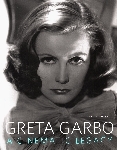| ALTERNATE TITLES |
Die Frau mit den zwei Gesichtern (GERMANY)
Liebe auf den zweiten Blick (AUSTRIA)
La femme aux deux visages (FRANCE)
Tvillingarna (SWEDEN)
Non tradirmi con me (ITALY)
Duas vezes meu (BRAZIL)
Dwulicowa kobieta (POLAND) |
A Mulher de Duas Caras (PORTUGAL)
Femme aux deux visages (BELGIUM)
Kaksoset (FINLAND)
Mujer de las dos caras (SPAIN)
Otra vez mío (AGENTINA)
Tvillingerne (DENMARK) |
| |
FILM SCENES
 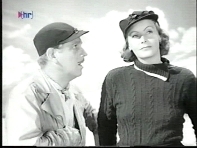 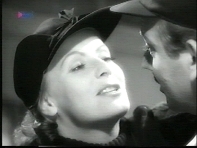 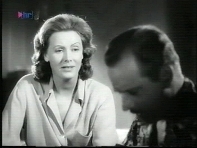
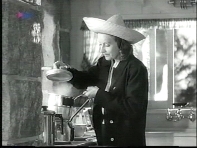 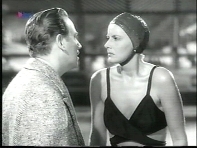 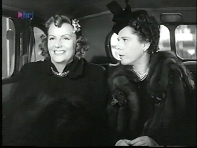 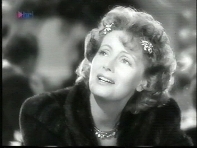
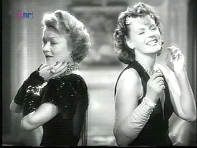 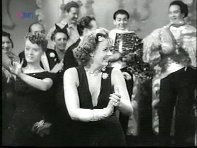 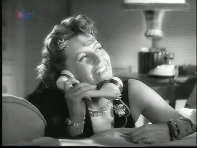 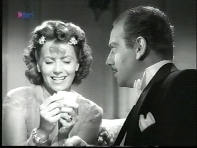
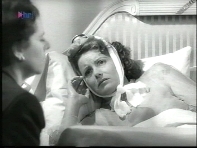 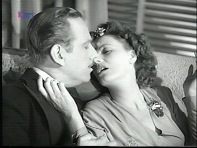  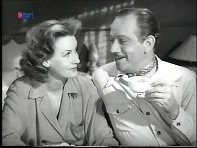
|
| |
| COMPANY |
Metro-Goldwyn-Mayer (MGM) |
|
| |
| CREDITS |
Directed by George Cukor.
Produced by Gottfried Reinhardt.
Photography by Joseph Ruttenberg.
Edited by George Boemler.
Musical score by Bronislau Kaper.
Recording supervised by Douglas Shearer.
Art Direction by Cedric Gibbons.
Associate: Daniel B. Cathcart. |
Set Decorations by Edwin B. Willis.
Gowns by Adrian.
Dance Direction by Bob Alton.
Hairstyles created by Sydney Guilaroff.
Jewels by Paul Flato.
Screenplay by S.N. Behrman, Salka Viertel and George Oppenheimer
(from the play Die Zwillingsschwestern by Ludwig Fulda) |
| |
| TECHNICAL SPECS |
MGM Production: 1190 |
90 Minutes (censored version)
94 Minutes (uncensored version) |
| |
| CAST |
Greta Garbo - Karin/Katherine Borg/Blake
Melvyn Douglas - Lawrence 'Larry' Blake
Constance Bennett - Griselda Vaughn
Roland Young - O. O. Miller |
Robert Sterling - Dick 'Dickie' Williams
Ruth Gordon - Miss Ruth Ellis, Larry's Secretary
Frances Carson - Miss Dunbar |
| |
| SYNOPSIS |
Larry Blake (Melvyn Douglas), publisher of a news magazine, goes to a ski resort on vacation. He meets and marries Karin (Greta Garbo), a ski instructress there. Larry promises Karin to give up his sophisticated New York life, and returns to the city alone. His ex-flame, Griselda Vaughn (Constance Bennett) plots to get him back. Unknown to anyone, Karin arrives in New York. She sees she cannot compete with the glamorous Griselda.
To combat Griselda. Karin impersonates her own twin, a gay and worldly-wise woman. Larry realizes it is really Karin and tries to get her to expose herself. When he makes love to her, she realizes her plans have backfired. She returns to the ski resort. Larry follows her, proves to her that he was on to her disguise, and they are reconciled. |
| |
PREMIERED/
RELEASED |
Premiere Date: November 30, 1941 Release Date USA: December 4, 1941 (in selected East Coast theatres)
Censored Version: December 31, 1941 Revised Version: January 1, 1942.
Release Date in Germany: 16.09.1948 – TV 20.10.1973 (ZDF) |
| |
| PRODUCTION |
Production Dates: June–August 1941 (additional filming in September 1941)
Production Location: USA
|
| |
| MOVIE STILLS |
The Stills were made during the production by William Grimes . 175 Movie Stills were shot.
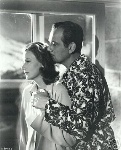 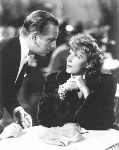 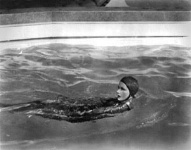 |
| |
| TRIVIA |
 Two-Faced Woman was Garbo final film. Two-Faced Woman was Garbo final film.
 Melvyn Douglas appeared opposite her for the third time in this second of her American comedies. Melvyn Douglas appeared opposite her for the third time in this second of her American comedies.
 Cary Grant was Cukor's first choice as Garbo's leading man. Cary Grant was Cukor's first choice as Garbo's leading man.
 William Powell was considered as Larry Blake. William Powell was considered as Larry Blake.
 Garbo's Salary was $150.000. Garbo's Salary was $150.000.
 Filmed in 60 days. Filmed in 60 days.
 Based on the Austrian Ludwig Fulda play Die Zwillingsschwestern (The Twin-Sisters). Based on the Austrian Ludwig Fulda play Die Zwillingsschwestern (The Twin-Sisters).
 Garbo's Co-Star, Constance Bennett, starred in a similar film called Moulin Rouge (20th C. Fox, 1934) Garbo's Co-Star, Constance Bennett, starred in a similar film called Moulin Rouge (20th C. Fox, 1934)
 A song, titled Two-Faced Woman, was written to promote the film. A song, titled Two-Faced Woman, was written to promote the film.
 MGM Publicist Howard Dietz claimed that he suggested the final title Two-Faced Woman. MGM Publicist Howard Dietz claimed that he suggested the final title Two-Faced Woman.
 Bernard Hyman was originally hired to produce the film. Bernard Hyman was originally hired to produce the film.
 Sidney Franklin, was origianlly assigned to produce Two-Faced Woman. He was the director of the original Sidney Franklin, was origianlly assigned to produce Two-Faced Woman. He was the director of the original
Silent 1925 film (also based on the Ludwig Fulda play). But Franklin lost interest after a while and left the
production.
 Camera man, William Daniels was Cukors and Garbo's first choice. But he was tied up with a Judy Garland Camera man, William Daniels was Cukors and Garbo's first choice. But he was tied up with a Judy Garland
movie.
 MGM's Costume designer Adrian created a chic wardrobe for Garbo's masquerade as Katherine. But at the MGM's Costume designer Adrian created a chic wardrobe for Garbo's masquerade as Katherine. But at the
last minute he was told that it was too glamorous. Garbo needed gowns that were more American-looking.
 It is said that, C.Bennett stole so many scenes from Garbo that one-quarter of the film was re-shot. It is said that, C.Bennett stole so many scenes from Garbo that one-quarter of the film was re-shot.
 The bathing suit Garbo wears was designed by Valentina. The bathing suit Garbo wears was designed by Valentina.
 Garbo told Cukor that she did not want to be shot in a bathing suit. Garbo told Cukor that she did not want to be shot in a bathing suit.
 MGM publicists described Garbo in Two-Faced Woman as The greatest oomph girl of all time. MGM publicists described Garbo in Two-Faced Woman as The greatest oomph girl of all time.
 The Location used for the Ski Scene's is known as: Super Bowl. The Sugar Bowl lodge (incorporated in The Location used for the Ski Scene's is known as: Super Bowl. The Sugar Bowl lodge (incorporated in
1937) became a popular mountain hide-away for the Hollywood jet set of the 1940's and 50's. Stars and
starlets like Claudette Colbert arrived in style by train spending beautiful timeless days on the slopes of
Sugar Bowl.
 The movie was originally condemned by the National Legion of Decency for it's immoral attitude towards The movie was originally condemned by the National Legion of Decency for it's immoral attitude towards
marriage, and impudent suggestive scenes, dialogue and situations, and costumes. After the original print
was revised, it was removed from the condemned list. |
| |
| BACKGROUND STORY |
What's next?
After the huge success of Ninotchka, MGM went on a long search for possible new Garbo stories. MGM had the idea for another Lubitsch-Garbo collaboration. Ninotchka director Ernst Lubitch had many ideas for a new Garbo film. Screenwriter and Garbo friend, Salka Viertel left MGM after Ninotchka. She signed a deal with Warner but Garbo wanted her to come back.
So MGM rehired her and Salka went on a search for a new Garbo film story. She suggested Scott O'Dells western vehicle Woman of Spain. Producer Max Reinhardt (now working for MGM) was going to produce Garbo's next film. He hoped to mount a production of Maurice Maeterlinck's Sister Beatrice with Greta. They had many ideas but what they all would have liked best was a sequel to Ninotchka.
A new American Image
After a while the found the right story - The Twin Sister. It was an old Vienna comedy play by Ludwig Fulda set in Renaissance Italy. On November 20 in 1940, Garbo signed a contract with MGM. Her salary was cut from the usual $250,000 to $150,000. The reason was the War in Europe and so her most successful market didn't exist anymore.
Garbo needed a new image for the American market and so MGM wanted to americanize her image. Salka worked on the script but the progress was very slowly. The script has been re-written several times. Due of the many writers involved, it was being pulled in all directions. The Breen Office turned the script down. On the grounds that it conveyed implications of a premarital carnal relationship. The offending scenes were re-written.
A public Scandal
Filming began on June 18, 1941 with an incomplete script. The ski-lodge scenes were the first they filmed. The scenes of her arrival in New York had to be shot twice because the script did not play. Filming ended August 22. Garbo was sad that the story changed so much from the Orginal story by Salka.
She had a feeling that her work on Two-Faced Woman was not really finished. On November 23, MGM prepared to release the motion picture in first-run theaters. It became the focus of public scandal. This simple comedy became the first movie in the history of the Production Code office to be passed. I t was passed by censors but condemned by the Catholic Legion of Decency.
The film received a “Class C” (condemned) rating. This was for its: “Immoral and unChristian attitude toward marriage and its obligations. Imprudently suggestive scenes, dialogue and situations and suggestive costumes". Archbishop Spellman, the powerful leader of the church in New York, published a pastoral letter. He was urging faithful Catholics not to see Two- Faced Woman. Other church leaders would follow suit. The movie was even banned in some parts of America.
Re-Shoots
So, MGM arranged to re-film some scenes and to film the famous "telephone scene" with M. Douglas. A reporter wrote that Constance Bennett was stealing the show. So, MGM cut all from Bennetts scenes from the third act and some new scenes were filmed. Garbo returned to the studio for two weeks of retakes. The retakes were finished on October 2.
MGM cut all from Bennetts scenes from the third act and some new scenes were filmed. Garbo returned to the studio for two weeks of retakes. The retakes were finished on October 2. The new version was released January 1, 1942. “Two-Faced Woman was not good and it could never be made good,” Garbo said later.
|
| |
| BUSINESS DATA |
Budget: 1.247.000 Dollar
Gross: USA: 1875.000 Dollar; Non-USA: 925.000 Dollar; World: 1.800.000 Dollar.
Loss: 62.000 Dollar.
Garbo's Salary: $150.000 |
| |
| PORTRAITS |
Clarence Sinclair Bull made the portraits of Garbo for the film on October 3, 1941.
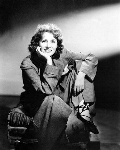 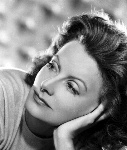 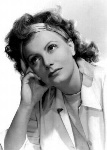  |
| |
| REVIEWS |
New York Times:
As for Miss Garbo, this is clearly one of the less propitious assignments of her career. Though she is her cool and immaculate self in the role of the clean-limbed ski instructress. She is as gauche and stilted as the script when playing the lady of profane love. No doubt her obvious posturings, her appallingly unflattering clothes and make-up were intended as a satire on the vamps of history. Instead, her performance misses the satire and looks like something straight out of the movies of 1922.
Mr. Douglas, who probably spends more time in pyjamas than any male lead in history, continues to look as though a brisk walk in the open air in street clothes would refresh him. Apply that rule to the whole film. Open the windows, Messrs. Cukor, Behrman, Oppenheimer, et al. This is 1942, and Theda Bara's golden age is gone.
The Time:
An absurd vehicle for Greta Garbo.... Its embarrassing effect is not unlike seeing Sarah Bernhardt swatted with a bladder. It is almost as shocking as seeing your mother drunk. Cecilia Ager for the newspaper PM: The screen doesn't have an actress to compare with Garbo for loveliness, sensitivity, incandescence. She has feeling first, and she's acquired the technical proficiency and the knack of timing with which to express it.
In Two-Faced Woman she reveals still deeper stores of humour and evanescent tenderness than ever before. Her voice has become an instrument that indicates all the emotions in their most subtle gradations. Just on the record of the sound track she's superb. And this is the woman, so unique in the movies that she's no longer a person but become now a symbol, a legend, whom Two-Faced Woman does everything it can to destroy.
The wickedness in Two-Faced Woman was not in its careless disregard of what are supposed to be public morals–it had no more contempt for the conventions than a half-dozen recent movies for whose transgressions it was made an example of–its wickedness lies in its vandalism. In its story's frenzy to cover up its own emptiness, its sterility, its lack of any fine feelings, it makes Garbo a clown, a buffoon, a monkey on a stick. The fact that it's a comedy doesn't excuse its confused motivation. Its repetition, its distasteful heartlessness. |
| |
| SIMILAR FILMS |
Moulin Rouge
– with Constance Bennett (20th Centuy Fox, USA 1934). This is a musical comedy in which Bennett plays a dual role as twin sisters.
Her Sister from Paris
– with Constance Talmadge (First National Pictures, USA 1925). This is a silent comedy and based on the orginal Ludwig Fulda play, in which Bennett plays a dual role as twin sisters. |
| |
STORY FROM
THE FILM SET - PART 1 |
Garbo was scared to film the nightclub scene, in which she would dance a rumba. The Studio sent choreographer Robert Alton to her home to coach her. He rang the doorbell, knocked and called out, but he received no welcoming response.
When he was about to leave, he looked into the garden and saw Garbo in the branches of a tree. “Go away, rumba!” she yelled at him. |
| |
| STORY FROM THE FILM SET - PART 2 |
Before filming started, the casting director cabled a cabaret artist in New York: "Am looking for Garbo double who is excellent rumba dancer. Remember you well for your impersonation and appearance.
But would appreciate you informing me as to your dancing ability, exp. rumba." (It is not recorded whether the woman was used or not; her name, by one of those freakish coincidences, was Elizabeth Taylor-Martin.) |
| |
| ALTERNATE SCENES |
The original length of the film was 94 Minutes. Some scenes and takes from the original movie were cut. New scenes or takes were filmed and added. The Uncensored Version (with the alternate scenes and takes) still exists and was shown at a George Cukor retrospective in spring 2004 London/England.
Warner is aware of this version and it is very possible that it will be released on DVD. The Uncensored Version does contain the following scenes and takes:
The Pajama scene:
The first difference is visible in the scene after Larry (M. Douglas) and Karen (G. Garbo) got married. They return to their chalet where they find Ronald Young and Ruth Gordon. Then we see the famous screaming scene of Griselda and Larry goes up to the room to join his wife. When she asks for her pajamas, this scene is slightly different. In the uncensored version we see her hand suggestively coming out of the bathroom. She picks up the top form of her pajamas.
The more glamorous scene:
The second and more important significant difference occurs after Karen appears in New York. Miss Elli (R. Gordon) is advising Karen (Garbo) how to look more glamorous. This scene had to be rewritten five times. It was: Karin makes an unexpected appearance at her husband's office. In it, Karin sees a magazine article about Lawrence's old flame.
A photo caption reads: 'Griselda Vaughn. Youth ... Beauty ... Achievement.' “Is that all?” Karin asks. “The other things you couldn't put into a caption,” replies Miss Ellis. “If this is what's wanted I think I can supply it . Elegance? Well, I'll be elegant. Chic? Well, why shouldn't I be chic? Perhaps I was stupid to try to change better. What did you say her dressmaker's name was? Or didn't you?” says Karin.
The Broadway theater scene:
She than goes to the Broadway theater to surprise her husband and finds him with Griselda. When the rehearsal ends she actually sees them kissing and cries. (where as in the censored version we do not see the kiss).
No telephone scene:
There is no telephone scene of course. The telephone scene where Larry at the nightclub scene calls Snow Lodge. Than he finds out that his wife has left for New York.This Scene is not in.
The confrontation with Griselda scene:
The confrontation in the powder room with Griselda is shot differently. The dialogues are pretty much the same. Those are different shots and angles, the voice delivery is different. It was obviously re-shot for the censored version.
The sensual kiss in the Hotel room scene:
Next, after the chica-choca scene when she goes with Douglas to her hotel room. The moment where she says: "Not even a sisterly kiss". He approaches and says: "You are Karen".
In the uncensored version, she says slyly: "You think so?" and gives him a real sensual kiss which of course is missing from the censored version.
More provocative in the Hotel room scene:
In the same scene, after she puts on her "serious" costume, Garbo is far more provocative. (the way she lies down on the sofa, stretches her legs) It is really much more sensual and suggestive than in the censored version.
Some of the lines are different, different close-ups etc. It was obvious that the scene was re-shot for the censored version. The same goes for Karen's second visit at Larry's apartment.
Griselda in Snow Lodge scene:
Many of Griseldas (C. Bennett) scenes in the films third Act were cut. A scene of the original ending had Griselda being lost in the snow. This was making Larry realize that he has loved Karin all along. Reunion scene at Snow Lodge. The reunion scene at Snow Lodge between Garbo and Larry is very different.
In the uncensored version we first see Douglas at the chalet. Actually rehearsing a speech of a break-up. It was something like: "Dear Karen, I think we made a mistake and must put and end to our marriage and so on."
Then we see her and she is actually doing the same thing something like: "Dear Larry our marriage was a mistake and we must put and end to it." It is really a wholly different scene concept. The two are there to admit that they made a mistake. Larry does not yet know that his wife is also the twin sister who has seduced him.
Then he comes down and they end up sleeping together. In the morning when he wakes up, he sees her still asleep. He looks at her feet and realises that he is dealing with the same person.
|
| |
| PICTURES FROM THE DELETED SCENES |
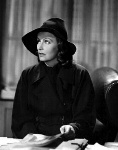 Karen in Larry Blake's New York Office.
Karen in Larry Blake's New York Office. |
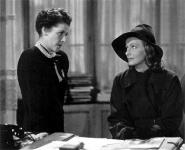
Miss Ellis is advising Karen how to look more glamorous. |
 Katherine Borg back at the Snow Lodge.
Katherine Borg back at the Snow Lodge. |
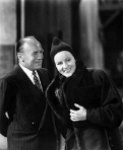 Roland Young and Garbo
Roland Young and Garbo |
| |
| AD CAMPAIGN SLOGANS |
Go gay with Garbo!
Garbo is twins and she's double trouble for Melvyn Douglas!
Garbo swims! Garbo skis!
Garbo originates the new Short Bob!
Garbo rumbas the Chica-choca!
Garbo wrestles with her man while clad in filmy finery!
Garbo at her gayest!
Garbo - The greatest oomph girl of all time
She's Twins! Her first picture in two years . . . so we're giving you two Garbos in this one! And both of her are terrific!
Go gay with Garbo!
Her first picture since "Ninotchka" |
| |
| WORKING TITLES |
Turns
I Love Your Sister
The Twins
Anna and Anita
Her Weekend Sister
Her Wicked Sister
Naughty Today and Nice Tomorrow
Nice Little Hussy
It's Nice to Be Naughty
Her Sisters Husband
Double Meaning
|
A Double Life
Beside Herself
The Gay Twin
The Adorable Twin
Her Gay Sister
Happily Married
Twin Wives
The Shadow Wife
One-Day Bride
Ubiquitous Lady |
| |
| THE ORIGINAL PLAY |
Based on the play Die Zwillingsschwestern (The Twin-Sisters), by Ludwig Fulda. |
| |
| THE WORKING SCRIPT |
This is a pic from the original script from the personal collection of second unit director Jack Greenwood. Meticulously annotated on all one-hundred and forty-seven pages, this was the working copy that contained all production details for director George Cukor's use. Greenwood's notes show a fascinating work-in-progress as he included every minor and major dialogue change, every scene revision (of which there were many due to the strict production codes at the time) and every detail about wardrobe.

This was sold at an auction in early 2000.
A spectacular bonus to this manuscript is the over one-hundred black and white snapshots that are trimmed and glued within the script pages. They were taken for wardrobe purposes and depict Greta Garbo, Melvyn Douglas, Constance Bennett, Roland Young, Ruth Gordon and the rest of the cast attired in the Adrain-designed costumes worn throughout the film. |
| |
